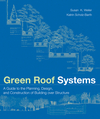Is This a LEED Roof?




For roofing professionals, one of the biggest challenges of the LEED Green Building System has been the common misconception that there is something called a “LEED roof.” However, because LEED is intended to provide a measure of total building sustainability rather than the sustainability of individual components, it is next to impossible to separate roofing out from the overall LEED system. Unfortunately, that hasn’t stopped many building owners from demanding that roofing professionals provide them with a roof that embodies the entire LEED system.
It’s important to note that concept of the mythical LEED roof has nothing to do with LEED or its sponsor, the U.S. Green Building Council. In fact, the USGBC has worked diligently and very successfully to increase public awareness of the importance of sustainability. Instead, the mythical LEED roof is a product of the all-too-human tendency to oversimplify and jump to conclusions.
In fact, the newest draft version of LEED (LEED v4) debuting at this month’s Greenbuild convention in San Francisco may go a long way to counter such misconceptions. It’s not that LEED v4 addresses the issue directly, but a dramatic increase in the complexity of the LEED system itself will make it much more difficult for building owners to jump to oversimplified conclusions. As an example, if you’re worried that too many building owners only look to roof reflectivity to identify a “LEED roof,” take a look at the new and very complex formula in LEED v4 for evaluating cool roofs shown in Figure 1.
Given the relative low state of math skills in our country, the answer to the question “Is this a LEED roof?” now may become “Huh?” All kidding aside, this example illustrates how as the LEED program grows and matures, it may become far too complex for oversimplifications like the mythical LEED roof. And in the long run that will be a good thing for the roofing industry because it will allow us to set new and better standards for identifying sustainable roof systems.
An alternative approach to answering “Is this a LEED roof?” can be found in the RoofPoint sustainable roof rating system developed by the Center for Environmental Innovation in Roofing. This innovative roof rating tool (mentioned in several previous columns this year) offers a comprehensive approach to sustainable roofing, but with a straightforward checklist that is easy to understand and apply. Instead of overemphasizing a single concept such as roof reflectivity, the RoofPoint system helps building owners and roofing professionals make the best decisions for sustainable roofs by focusing on all key aspects of sustainability from achieving efficiency in energy and materials to optimizing useful service life. And the RoofPoint evaluation checklist now can be completed using a simple web-based application available at the RoofPoint website (www.RoofPoint.org).
Growing market interest in RoofPoint also suggests that it can help fill the gap left by the increased complexity of LEED. In fact, new RoofPoint project applications are arriving at the Center every week, and it looks like the Center’s original goal of 100 new RoofPoint projects during 2012 will be more than doubled due to an outpouring of support from roofing contractors across the country.
So, between the growing complexity of LEED and the emergence of useful sustainable roof rating systems like RoofPoint, maybe the question “Is this a LEED roof?” will become a new and better question, “Is this a sustainable roof?”
|
Figure 1. The LEED v4 formula for evaluating cool roofs. |
|
0.5(ANRM) + 0.75[ARRA(SRIA/SRIR)] + 0.75[ARRB(SRIB/SRIR)] + 0.75(AVR) ≥ATSP + ATR Where: ANRM = Area of Nonroof Cooling Measures ARRA = Area of Reflective Roof A (or B, C, etc.) SRIA = SRI of Reflective Roof A (or B, C, etc.) SRIR = Required SRI AVR = Area of Vegetated Roof ATSP = Total Site Paving Area ATR = Total Roof Area — Source: LEED v4 Credit SSc5 Heat Island Reduction |
Looking for a reprint of this article?
From high-res PDFs to custom plaques, order your copy today!








